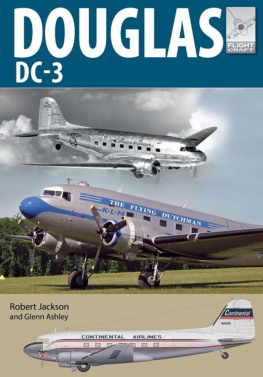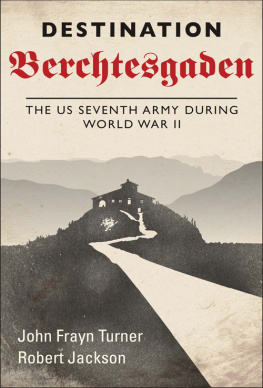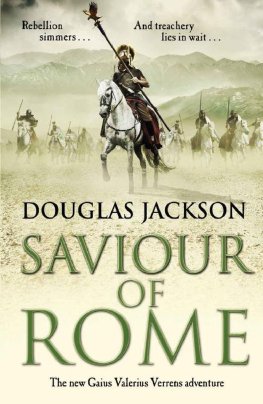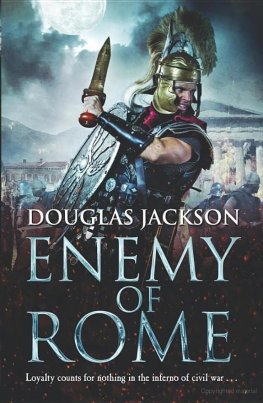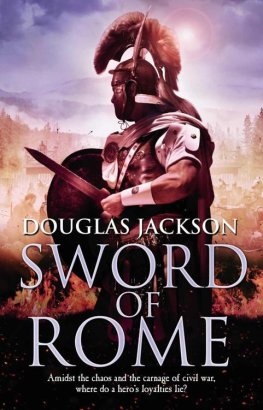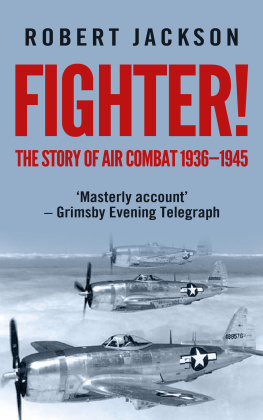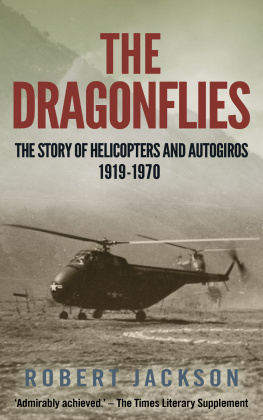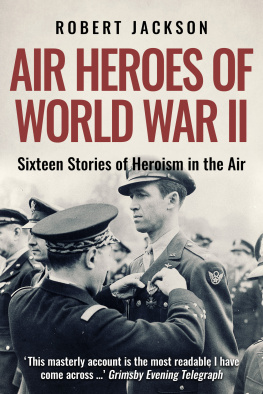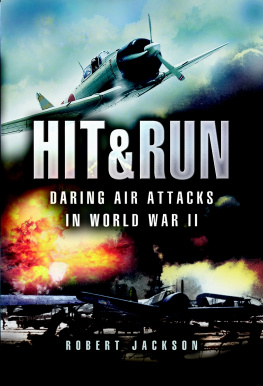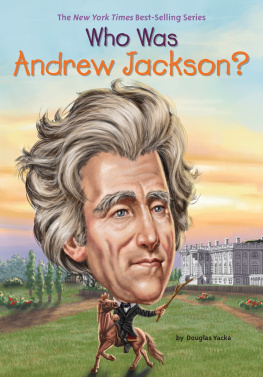Jackson Robert - Douglas DC-3
Here you can read online Jackson Robert - Douglas DC-3 full text of the book (entire story) in english for free. Download pdf and epub, get meaning, cover and reviews about this ebook. year: 2020, publisher: Pen & Sword Books Limited, genre: Non-fiction. Description of the work, (preface) as well as reviews are available. Best literature library LitArk.com created for fans of good reading and offers a wide selection of genres:
Romance novel
Science fiction
Adventure
Detective
Science
History
Home and family
Prose
Art
Politics
Computer
Non-fiction
Religion
Business
Children
Humor
Choose a favorite category and find really read worthwhile books. Enjoy immersion in the world of imagination, feel the emotions of the characters or learn something new for yourself, make an fascinating discovery.
- Book:Douglas DC-3
- Author:
- Publisher:Pen & Sword Books Limited
- Genre:
- Year:2020
- Rating:3 / 5
- Favourites:Add to favourites
- Your mark:
- 60
- 1
- 2
- 3
- 4
- 5
Douglas DC-3: summary, description and annotation
We offer to read an annotation, description, summary or preface (depends on what the author of the book "Douglas DC-3" wrote himself). If you haven't found the necessary information about the book — write in the comments, we will try to find it.
Douglas DC-3 — read online for free the complete book (whole text) full work
Below is the text of the book, divided by pages. System saving the place of the last page read, allows you to conveniently read the book "Douglas DC-3" online for free, without having to search again every time where you left off. Put a bookmark, and you can go to the page where you finished reading at any time.
Font size:
Interval:
Bookmark:

F LIGHT C RAFT 21
Robert Jackson
First published in Great Britain in 2020 by
Pen & Sword Aviation
An imprint of
Pen & Sword Books Ltd
47 Church Street
Barnsley
South Yorkshire
S70 2AS
Copyright Robert Jackson, 2020
ISBN 9781526759986
eISBN 9781526759993
Mobi ISBN 9781526760005
The right of Robert Jackson to be identified as Author of this work has been asserted by him in accordance with the Copyright, Designs and Patents Act 1988.
A CIP catalogue record for this book is available from the British Library.
All rights reserved. No part of this book may be reproduced or transmitted in any form or by any means, electronic or mechanical including photocopying, recording or by any information storage and retrieval system, without permission from the Publisher in writing.
Pen & Sword Books Ltd incorporates the Imprints of Pen & Sword Archaeology, Atlas, Aviation, Battleground, Discovery, Family History, History, Maritime, Military, Naval, Politics, Railways, Select, Transport, True Crime, Fiction, Frontline Books, Leo Cooper, Praetorian Press, Seaforth Publishing, Wharncliffe and White Owl.
For a complete list of Pen & Sword titles please contact
PEN & SWORD BOOKS LIMITED
47 Church Street, Barnsley, South Yorkshire, S70 2AS, England
E-mail:
Website: www.pen-and-sword.co.uk
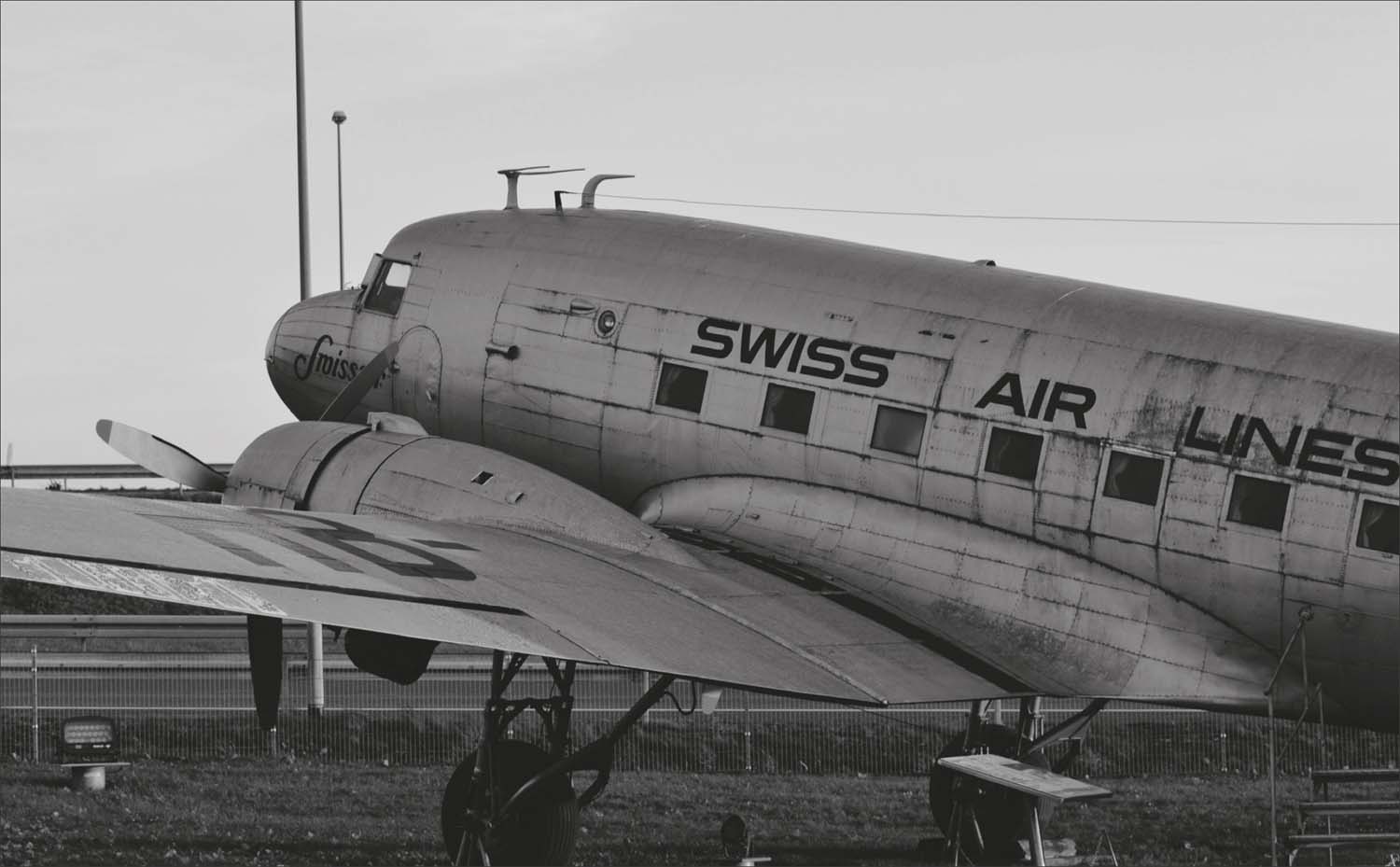
The DC-3 played a key part in the recovery of commercial aviation in Switzerland after the Second World War.
In the United States, after the end of the 191418 war, aviation military and civil alike had slipped into the doldrums, mainly because of a steadfast refusal by Congress, under President Coolidge, to budget any funds for its development. Neither was there much incentive to develop new types of aircraft, as the market was flooded with thousands of surplus military machines, most of them in mint condition, and they were sold off to anyone who wanted them at ridiculously cheap prices.
As was also the case in Europe, the key to development in civil aviation during this period was mail. In 1925, Congress passed the Air Mail Act, which turned over the carriage of air mail to private contractors. There was already a coast-to-coast air mail route, which was flown by military aircraft on charter to the U.S. Post Office, but under the new Act bids were authorized for certain connections to this route. The most profitable and potentially worthwhile of these was the New YorkBoston connection, for which there were two serious bidders: one was Eastern Air Transport, founded in September 1925 by Juan Trippe, and the other was Colonial Airlines, which was run by a consortium of influential investors. The two companies merged and became Colonial Air Transport, which was duly awarded the contract. In 1930, having acquired many more smaller operators, Colonial was developed into American Airways, later to be rebranded as American Airlines.
Meanwhile, in November 1925, another company called Western Air Express had been awarded a contract to carry mail between Los Angeles and Salt Lake City, beginning operations in April 1926 with six Douglas M-2 biplanes, conversions of military observation aircraft. In May 1926, Western Air Express began to carry passengers whenever the mail load permitted, the trip costing $90.
The carriage of passengers in addition to mail and freight was an attractive formula, and one adopted by the big four U.S. airlines Transcontinental & Western Air, American, United and Eastern by 1930. At this time, the airlines were mainly equipped with two types of three-engine aircraft, the Fokker Trimotor, built by Fokker in the United States, and the Ford Trimotor. Although similar in configuration, there was one major difference between the two designs: the Fokker was of wooden construction, while the Ford was all metal.
On 31 March 1931, a Fokker F.10 Trimotor of TWA crashed in Kansas during a thunderstorm after a wing collapsed, killing all eight on board. The accident caused great concern throughout the United States, not least because one of the victims was Knute Rockne, a famous sportsman and coach of the renowned Notre Dame football team. Numerous factors complicated the subsequent investigation, resulting in difficulty establishing, with certainty, the cause of the crash. The investigation was initially undermined by a severe shortage of evidence: when government investigators first arrived at the crash site, they found that most of the wreckage had been taken by souvenir hunters and scavengers, leaving only engines, wings and propeller. Eventually, it was determined that the most likely cause of the accident, which possibly occurred in severe turbulence, was the composition of the aircraft. The wings of the Fokker Trimotor were made of wood laminate. In this instance, moisture had leaked into the interior of one wing over a period of time and had weakened the glue bonding the structure. One wing spar finally failed, causing the wing to develop uncontrolled flutter and separate from the aircraft.

The Ford Trimotor, seen here, and the Fokker Trimotor were the two principal types used by the embryo U.S. airlines in the 1920s and early 1930s. Unlike the Fokker type, the Ford airliner was of all-metal construction. (Langley Research Centre)
As a consequence of this accident, all commercial aircraft of wooden construction were subjected to stringent and costly checks. All TWAs Fokker Trimotors were grounded, and later destroyed. TWA found itself in desperate need of a new airliner, and Jack Frye, the airlines Vice-President of Operations, drew up a requirement for an all-metal three-engine monoplane to be powered by engines of 500550 hp, with a seating capacity of twelve passengers, a cruising speed of 150 mph, a maximum speed of at least 185 mph, landing speed not exceeding 65 mph, a service ceiling of at least 21,000 feet and a range of at least 1,080 miles. The aircraft would have to be able to take off on two engines from any airport served by the airlines transcontinental routes, including hot and high locations such as the 4,954-feet-high airfield at Albuquerque, New Mexico, where temperatures frequently exceeded 90F or 32C.

The Boeing Model 247, seen here in the livery of United Air Lines, was a successful design that seemed to have a promising future, but a fatal accident and the decision of TWA not to adopt it sealed its fate. (Boeing)
One airliner then being developed would have fitted the requirement admirably, except that it had two engines instead of three. This was the Boeing Model 247, an aircraft intended to revolutionize air transport. The Boeing 247 prototype, which was designed to carry ten passengers and a crew consisting of pilot, co-pilot and stewardess, made its maiden flight on 8 February 1933, and immediately made the entire world of commercial aircraft seem obsolete. Like its B-9 military bomber precursor, the new aircraft had an all-metal structure and was a low-wing monoplane with a retractable undercarriage. It was very streamlined, had good all-round performance and low operating costs, and its technical innovations included a wing and tail de-icing system. However, United Air Lines had a complete monopoly of the 247 production line, having invested the then fantastic sum of $3.5 million in an order for sixty aircraft before the prototype had even flown, and Boeing Air Transport, which was part of the United Group, introduced the first 247 into service on 30 March 1933.
Font size:
Interval:
Bookmark:
Similar books «Douglas DC-3»
Look at similar books to Douglas DC-3. We have selected literature similar in name and meaning in the hope of providing readers with more options to find new, interesting, not yet read works.
Discussion, reviews of the book Douglas DC-3 and just readers' own opinions. Leave your comments, write what you think about the work, its meaning or the main characters. Specify what exactly you liked and what you didn't like, and why you think so.

